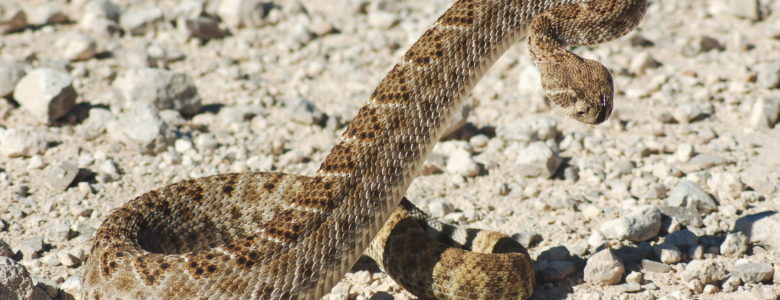The thought of snakes can illicit some squeamish responses. Snakes, often get a bad rap.
However, snakes play an important role in the functioning of local ecosystems.
Here are the three most common snakes residents are likely to encounter here in Eagle Mountain:
1-Great Basin rattle snake (Crotalus, lutosus). These rattle snakes are common in the undeveloped areas of the city. Spotted in the foothills and valley floors, these snakes are general enough in their habitat and diet that they can make it most anywhere. The City receives reports of them on social media frequently. The most important thing you need to know is to give them space. They are not aggressive unless provoked and will usually try to slip away without any confrontation.
It goes without saying, but rattle snakes are venomous and will bite if harassed or threatened. If a resident is bitten, it’s unlikely that person will die, but they should seek immediate medical attention.
Also be aware of where pets are while out enjoying the open space. It’s best in the spring, summer and fall to keep pets on a short leash if rattle snakes are known to be in the area. Dogs are more likely to encounter, and have a negative experience with, a rattle snake than a human. Be sure to know where the nearest veterinarian is who has anti-venom on hand. They are most active just before, and after, dark and like to shade up or go underground during the heat of the day.
A large specimen may be close to 4-feet in length, but rarely exceed 3-feet. Their diet consists primarily of small mammals and rodents — mostly deer mice Peromyscus, maniculatus and Ord’s kangaroo rat Dipodomys, ordii. They go into hibernation during early fall and stay in their hibernaculum until early spring.
2—Great Basin gopher snake (Pituophis cateniferer). Also referred to as the blow snake due to the hissing/blowing sound they make when threatened. Many actually confuse these snakes with rattle snakes because they will coil up and shake their tail similarly to a rattle snake.
These are a great snake to have around, to show kids and to teach dogs to be wary of snakes. They are docile and have been known to eat rattle snakes. They are a great snake to have around the yard — especially if a residence is situated on the edge of the city as they also will take care of any rodent problems.
A large gopher snake can exceed 7-feet in length, but most are between 4 and 5-feet long. They may appear as a large scary snake, but are completely harmless. They do bite if threatened but are non-venomous. They prefer to eat small mammals, lizards and other snakes.
3—Wandering garter snake (Thamnophis, elegans). Also known as a water snake. These are equally common throughout the city and are often found near wet areas, around homes, or areas that have open water.
These snakes, other than the smell, are completely harmless. A big adult garter snake can often exceed 3-feet, but are generally 18 to 24-inches long. They will sometimes feed on small mammals but are more likely to eat insects, small reptiles and amphibians. While they are harmless, they do excrete a milky/musky liquid that stinks and is hard to get rid of once on your skin.
There are several other species of snakes that have been found throughout the Great Basin. Some of these snakes exist in Eagle Mountain, although in low densities and are certainly less common than the three mentioned above. Here is a list of those snakes:
Uncommon snakes or snakes were likely once here in Cedar Valley.
Western yellow-bellied racer (Coluber, constrictor mormon) These snakes become more common further south in the Great Basin. Like the name implies, they are one of the fastest snakes around.
Ringneck Snake (Diadophis, punctatis) They are likely more common the further south you go in the Great Basin, primarily southern Utah. They spend most of their time in the ground. Once you see one, they are rarely miss ID’d as they have bright yellow to bright red under bellies.
Night Snake (Hypsiglena torquata)—Found about 30-miles west of Cedar Valley just before the Nevada border. They have interesting eyes.
Long-nosed Snake (Rhinocheilus, lecontei) — The long-nosed and hog nose snakes are one of my favorites. These are another species that are completely docile but excrete a musky smell when threatened. If Eagle Mountain residents find one of these, please email TBlack@emcity.org.
Did you know that all snakes are protected in Utah? As such, it is illegal to harm, harass, take, or keep them as pets. Anyone found doing so could be charged accordingly.


